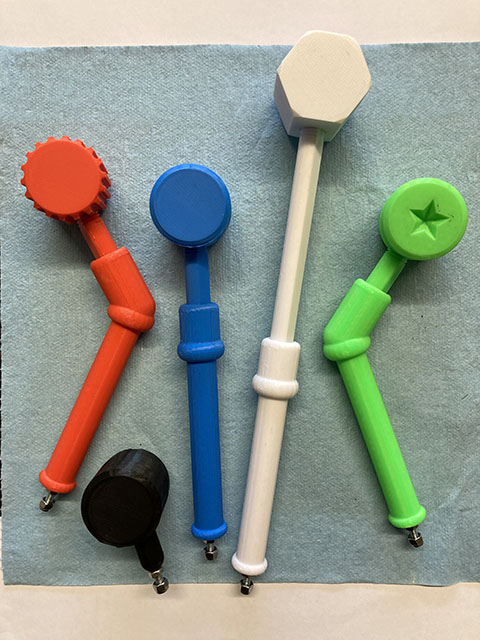How children use tools: Fix-a-Robot
Thank you for visiting the project website! You may have browsed here, or you may have taken part in our Fix-a-Robot experiment and want to know more about the results and our work.
First of all, thank you to everyone who took part! These experiments rely on people being willing to help us out so we could not have done it without you. We are still collating the data from the preliminary study, but we will publish that here as soon as we can. In the meantime, you can find out more about our other work by exploring the website.
Our experiment involves a whack-a-mole style task where you are asked to fix a robot by tapping the parts on it that light up with various tools. How people use the different-shaped tools tells us about how you learn to use tools. More specifically, it helps us understand how easily your brain can build so-called ‘internal models’ of devices that we use. These internal models are thought to underpin our ability to move rapidly and largely automatically, for example by allowing the brain to predict the consequences of activating different muscle groups.
Hopefully, by understanding natural movements and movements with tools, we will be able to discover what makes certain tools more intuitive to use and how we can translate that to other devices. In the future we hope our work can be used to inform the design of remote handing devices used in industry, minimally invasive surgical tools, and prosthetic limbs. .
This work is in collaboration with AMBIONICS and Ken Valyear (Bangor Psychology) .

.png)
